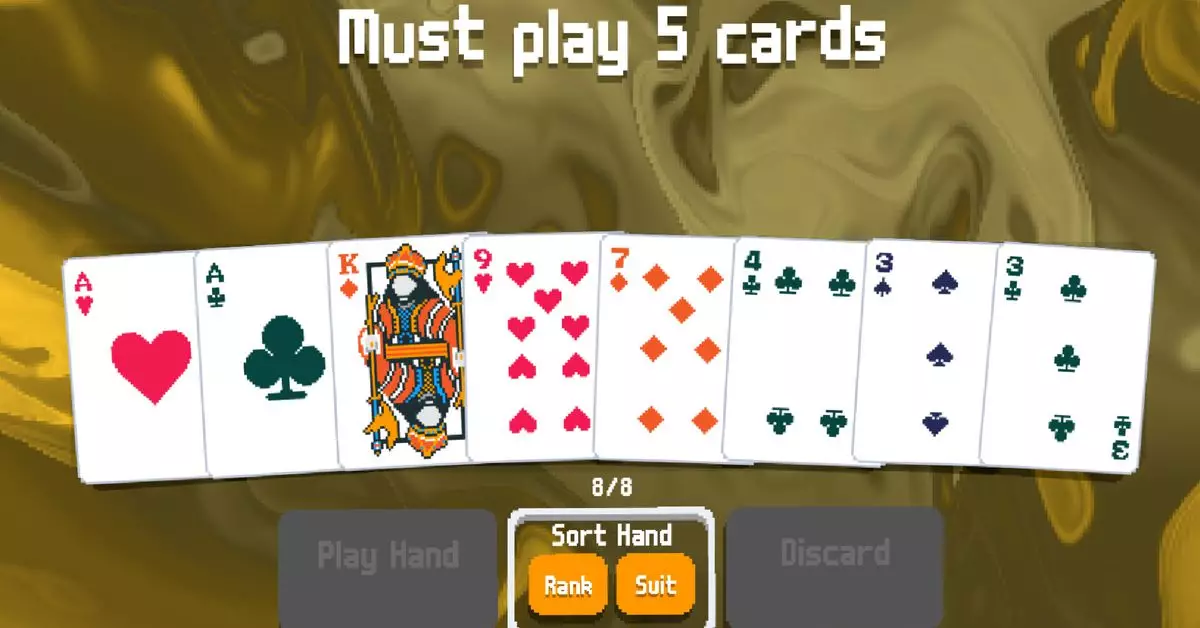In the rapidly evolving landscape of video games, the nuances of content ratings have become a pivotal conversation. A recent incident surrounding the indie game *Balatro* has cast a spotlight on the inconsistencies within the rating systems, particularly regarding the PEGI (Pan-European Game Information) ratings in Europe. This article delves into the controversy surrounding *Balatro*, created by LocalThunk, examining how its 18-plus rating draws sharp contrasts with other games that incorporate gambling elements yet receive far less severe evaluations.
*Balatro*, a poker-inspired roguelike game, initially debuted with a friendly 3-plus rating. However, shortly after its release in February, the game underwent a significant shift when PEGI updated its rating to 18-plus. The reasons cited for this abrupt escalation primarily revolved around the game’s use of “prominent gambling imagery.” This escalation triggered an emotional response from LocalThunk, leading to a satirical commentary on social media suggesting the addition of microtransactions or loot box mechanics—common in many mainstream games—to humorously lower *Balatro*’s rating to something more child-friendly, akin to the analysis of FIFA-related titles such as EA Sports FC.
The irony is profound; games featuring actual gambling mechanics or in-game purchases that create random, gambling-like experiences are often rated for a younger audience. LocalThunk’s frustration reflects a broader sentiment among developers and gamers alike, questioning the integrity and rationale of existing rating systems.
The disparity between *Balatro*’s rating and those of other games highlights critical flaws in how game content is evaluated. PEGI justified *Balatro*’s new rating by indicating that the game teaches players skills relating to poker and rewards them with poker “chips” for their gameplay successes. While it is true that the game illustrates various poker hands and provides educational content tied to real-life poker, it nonetheless does not integrate any gambling or monetary stakes into its structure.
In contrast, titles like EA Sports FC incorporate in-game purchases that enhance gameplay through randomized chance, verging on gambling principles. Yet, they are deemed appropriate for players aged 3 and up. This inconsistency raises pertinent questions about the standards used to evaluate video game content, prompting not only developers but also consumers to scrutinize the classification process more closely.
LocalThunk’s remarks extend beyond mere frustration; they encapsulate a growing sentiment within the gaming community regarding fairness and clarity in game ratings. Upon trying to engage with PEGI over the rating decision, LocalThunk was met with responses that largely dismissed the issues at play. Allegations of shifting blame to EU laws and store policies are alarming and beg the question of accountability in rating decisions. How can a gaming organization endorse such contradictions within their own framework without facing scrutiny?
Public reaction has been mixed. Some gamers rally behind LocalThunk and voice similar concerns, while others may perceive the rating as a necessary precaution against the potential normalization of gambling-like experiences in video games. Nevertheless, the point remains: is it fair to penalize a game for its educational content while allowing more problematic titles to slip through the cracks?
The situation surrounding the rating of *Balatro* should serve as a catalyst for change, prompting a reevaluation of the criteria used by rating organizations like PEGI. As video games become more complex, encompassing diverse themes and mechanics, the criteria for evaluating their content must adapt to reflect these evolutions accurately.
Additionally, as developers strive to innovate within the gaming space, a transparent and fair rating system will foster creativity rather than discourage it. In a world where themes of chance and risk permeate various gaming formats, ensuring consistency in ratings is crucial for both developers and consumers. The gaming industry stands at a crossroads; shifting this discussion from frustrations to actionable change could result in a more equitable environment for everyone involved.
LocalThunk’s closing words resonate beyond their immediate appeal and urge stakeholders within the gaming industry to confront the pressing need for reform. It’s time to ensure that ratings accurately reflect content, not only to protect children but to honor the artistry of game development.

